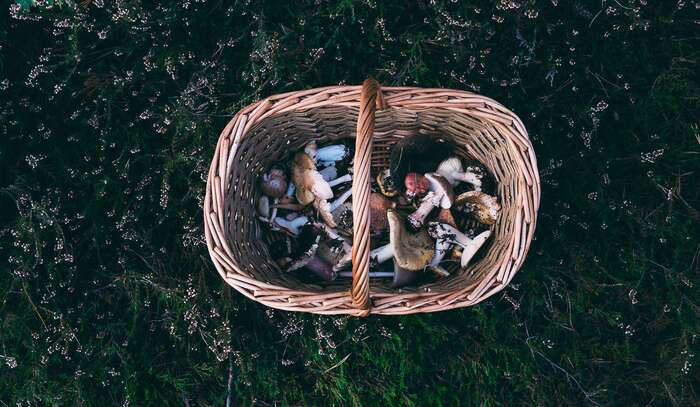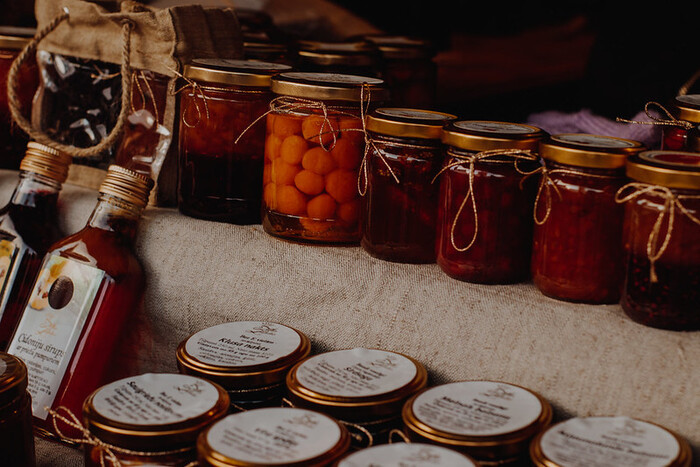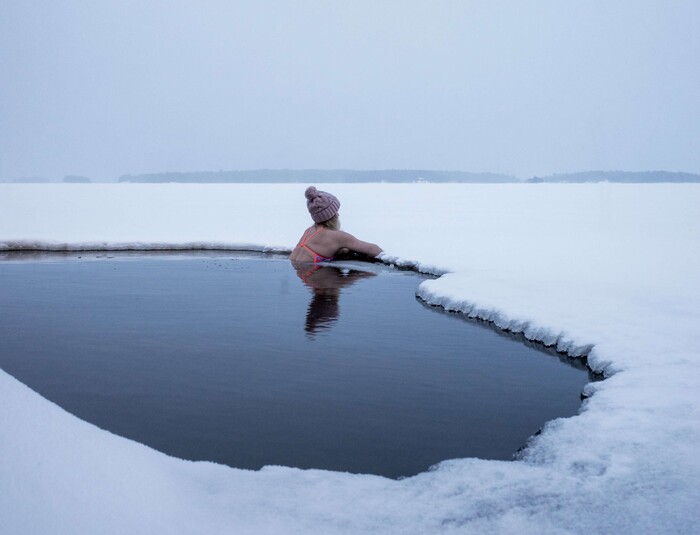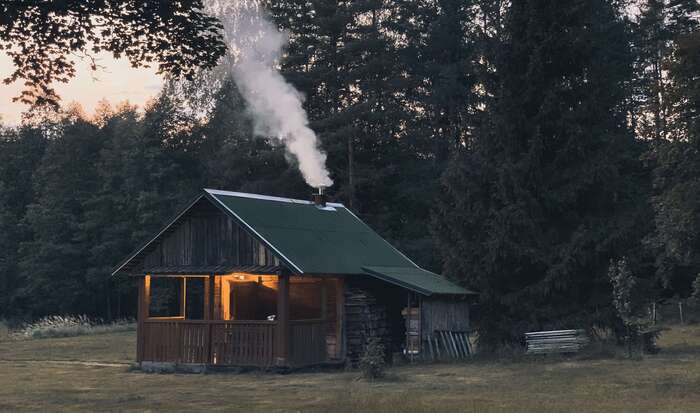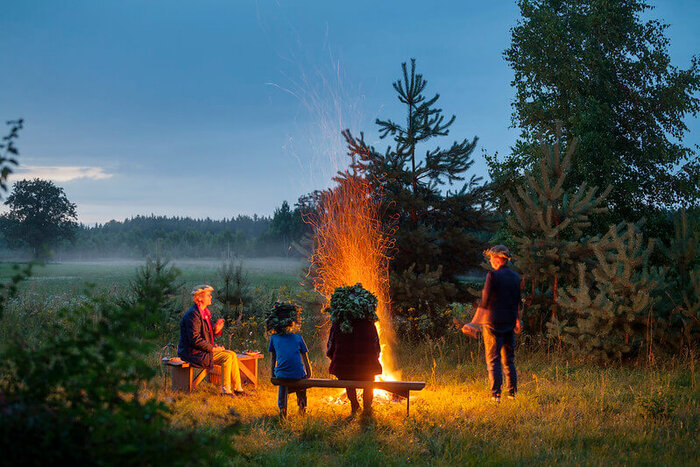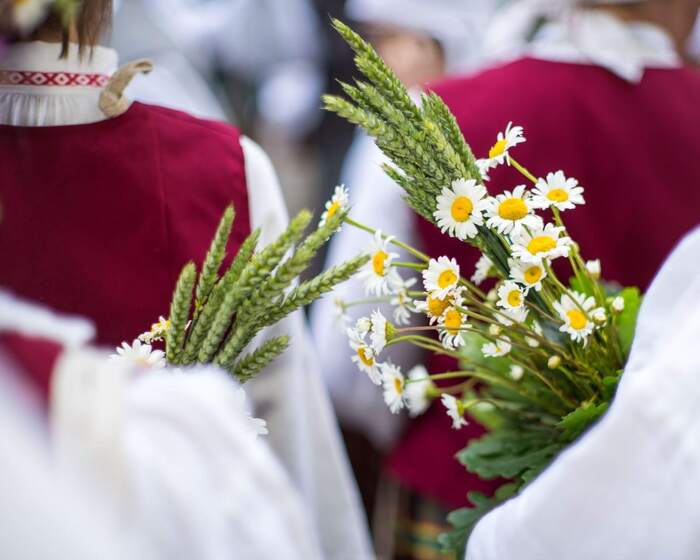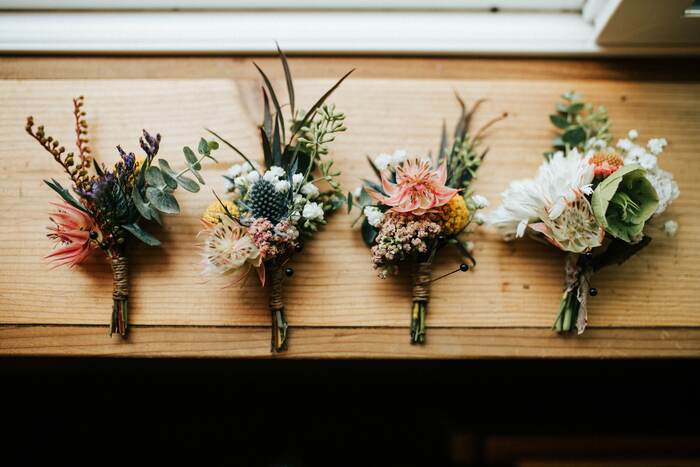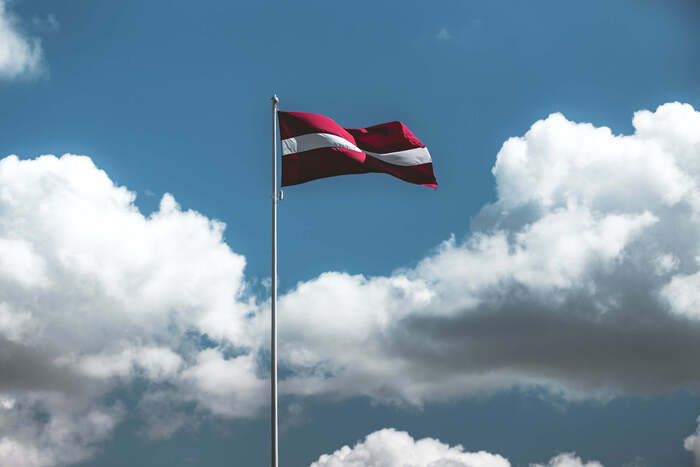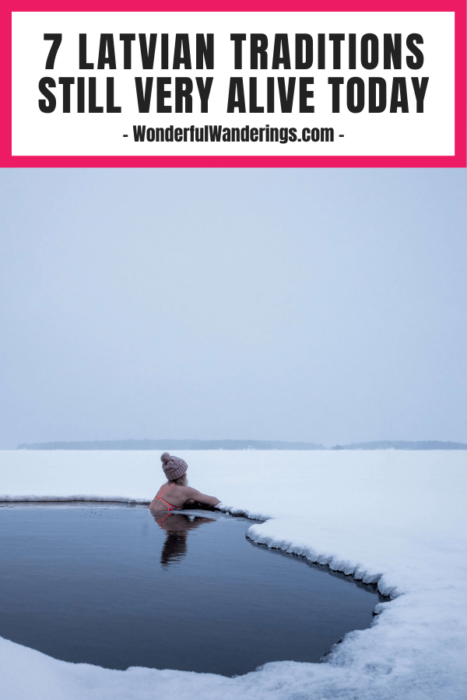With over 500km of coastline, dense forests, an abundance of outdoor pursuits, and rich cultural traditions, Latvia ticks all the boxes for an idyllic travel destination.
Riga offers historical buildings with stunning architecture. If you want adventure, the country’s hiking trails, beaches, rivers, and mountain biking opportunities will keep you entertained for weeks.
Latvian heritage is rich and counts many cultural traditions. Knowing more about Latvian traditions will enhance your experience and enable you to connect with local people if you plan to visit.
Let’s take a look at some of the Latvian customs that have been alive for generations.
1. Foraging
With over half the country covered in an ancient forest, Latvia is one of the greenest countries in Europe. For this reason, one of the most popular customs from Latvia is foraging.
People pick all sorts of plants and herbs with healing properties from the forest, along with mushrooms. There is a deep-rooted tradition of picking plants and herbs from the forest that have specific health benefits.
Foraging is an ancient tradition, not something that just sprung up due to modern wellness marketing! Older generations pass down the knowledge about which plants have healing properties- for example, St John’s Wort has natural antidepressant properties. These relatives also keep the knowledge alive about which mushrooms and berries are safe for human consumption.
If you don’t have your own relatives to learn from, you can visit farms and guesthouses where the owners share their wisdom.
2. Preserving and Pickling
Smoking, preserving, and pickling go hand in hand with the foraging culture that provides an abundance of delights from the forest. Latvian cuisine is diverse and very dependent on the season. In spring and summer, people eat fresh berries and vegetables. When autumn comes, it’s pickling and preserving time.
Many home kitchens turn into pickling factories at the end of summer, as cucumbers, tomatoes, and onions are put into jars to preserve for winter. Chutneys and relishes are another smart way to preserve the summers’ bounty.
Preserving produce is a tradition that goes back beyond the days of international air-freighted vegetables and fruit. The tradition is resurging as many people take part in pickling and preserving as a hobby. Fermenting foods is also a popular trend.
Smoked fish is another historical tradition. For centuries, Baltic sea fishers have smoked their fresh catch. For the smoking process, the fishermen use native trees such as birch and maple. The wood used in the fire is important because it has a significant impact on the fish’s final flavor.
3. Winter Swimming and Cold Showers
Wild swimming and ice swimming are also popular traditions in Latvia. The locals brave the icy winter sea as it benefits the immune system and mental wellbeing. It’s been a natural way of self-care for centuries.
The locals who partake in ice swimming are known as Ronis which means “seals” in Latvian. Swimming in either the sea or ice holes, locals embrace the winter temperature for an adrenaline rush.
Would you brave it?
4. Saunas
Another of the popular customs of Latvia is the steam bath or pirtis. This sauna tradition is often combined with ice swimming.
There are many saunas nearby natural swimming spots, so you can heat up in the sauna and then cool off with a jump into the ice water. This quick change from hot to cold is excellent for strengthening your blood vessels and circulation.
The Latvian traditional sauna experience also includes swatting with twigs from birch trees. The swatting is said to rid the body of dead skin cells and aid circulation and heat transfer to the body.
There are numerous saunas and bathhouses in Latvia for you to try. Some companies will even bring a portable sauna to the beach for you!
The sauna culture is such a vital part of Latvian tradition; there is even a museum dedicated to the sauna tradition. The museum is located 40km outside of Riga.
5. Midsummer festival
The summer solstice is taken very seriously in Latvia. As the country is quite far north, the longest day in June gets about 20 hours of daylight. People celebrate Jāņi or “Liigo by staying up all night to meet the morning sun.
Celebrating midsummer is one of Latvia’s oldest cultural customs and can be traced back to Pagan times. All around the country, people light fires, sing songs and celebrate the midnight sun. You can find events in many public spaces around the country.
6. Latvian Traditions – Folk songs
Latvians proudly call themselves a nation of singers due to their well-preserved songs and traditional dance. One of the country’s leading cultural events is the Latvian Song and Dance Festival held once every five years.
At the Song and Dance Festival, thousands of choirs, musicians, and folk dance groups entertain a large audience. As many as 30,000 amateur and professional artists take part in this Latvian festival.
The festival is one of the largest amateur song and dance festivals in the world. It has even made it on to UNESCO’s Oral History and Non-material Cultural Heritage List.
After a launch party in Riga, the festival involves a week-long celebration of singing, dancing, and traditional Latvian music. Latvian songs are heard at various venues across the city for the duration of the festival.
Catching this spectacular festival in Latvia would be a fantastic way to embrace Latvian culture and traditions. The next festival should take place in 2023.
7. Latvian Wedding Traditions
A wedding is an excellent opportunity to showcase traditions. In Latvia, weddings are traditionally full of fresh flowers. All the guests give the newlyweds flowers; the newlyweds provide flowers for their parents. This grand flower exchange takes place after the ceremony.
Passing through symbolic ‘gates’ on the way to the wedding venue is another tradition still commonly followed at Latvian weddings. Guests hold the symbolic gates made from ribbon. They stop the couple on their route; the gatekeepers ask the couple to perform a task or quiz and pay them with a small present to pass through.
Once the couple arrives at the venue, they pass through an ‘alley’ made by the guests. The guests will throw oak and maple leaves as the newlyweds pass through.
Fire is also common at Latvian celebrations as it wards off evil spirits and brings wealth. The vedēji (the couple who are the witnesses at the wedding) make a small sacrifice to the fire. Women typically put something made of wool in the fire, men something made from iron.
7. Latvian Symbols and Meanings
Latvia has a long history of invasion, occupation, and gaining independence. Despite the ruling by other nations, many traditional Latvian symbols remain preserved.
The Latvian flag, for example, is from the 13th Century and one of the oldest in the world. According to legend, the flag is red and white because an injured Latvian chief laid on a white sheet that soaked up his blood. The soldiers then used this sheet as a banner in battle, and it led them to victory.
The freedom monument – Brīvības piemineklis is a significant Riga landmark as it symbolizes Latvian independence and statehood. The three stars the woman on the monument holds represent the three historical Latvian districts.
The Latvian national flower is the daisy used in festive wreaths worn by women and girls at the mid-summer festival. Men’s wreaths are usually made from oak leaves.
The oak tree and the linden tree are important symbols in Latvian folklore. Historically, the trees are for medicinal purposes, and they are the country’s national trees.
Plan Your Trip
If this article has inspired you to visit Latvia to experience some of these traditions for yourself, startplanning your itinerary.
Latvia may be a small country, but there is no shortage of adventures to be had, food to try, and culture to experience.
PIN FOR LATER
This post is brought to you in collaboration with Latvia Travel.
Find below the best pages about Latvia

